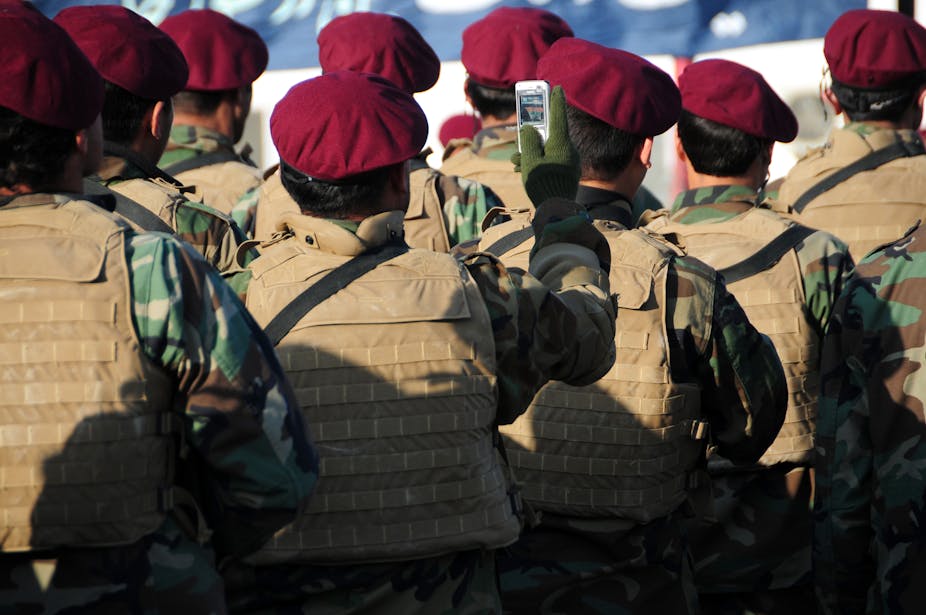Selfies taken by Russian soldier Alexander Sotkin appear to provide damming evidence that Russian forces have been operating in Ukraine. Sotkin posted a number of images on social networking site instagram, apparently without realising that they were being geotagged to reveal his location when he took them.
The fuss about the pictures shows the use of social media in the military is becoming increasingly controversial but we shouldn’t start to think that conflicts will be won and lost off the back of a picture uploaded onto instagram or a tweet posted in haste from the battlefield.
New media, old rules
The rules about using social media are pretty similar from army to army. Each force will have basic rules about how its members should communicate with the outside world. Personnel will be told that they shouldn’t bring their service or unit into disrepute or use communications where it distracts them from doing their duty. They will also be told not to give away any strategic or operational intelligence – which is where Sotkin will have fallen foul of basic security. A soldier shouldn’t blog or tweet or post pictures about their next deployment, latest weapons or mission, or anything else that would give the game away.
Stopping them from doing it is getting more and more difficult, though. Armies used to be more like what the social-psychologist Erving Goffman called a “total institution”. They were cut off from the general public, had their own rules, their own layers of authority, their own systems of punishment, their own unofficial rankings and their own culture. This is still basically the case but the rise of communications has lessened the feeling of separateness between the solider and the outside world.
This blurring barrier has in some ways been officially encouraged. In recent years soldiers have been supplied with equipment that lets them record what they do in entirely new ways. The most significant development of this kind has been helmet-mounted cameras. Footage from these devices easily be transferred to a DVD, sent back home and then copied and shared around or even uploaded onto YouTube. Armies also encourage their people on the ground to keep in touch with home via email and skype so a lot more information is being shared with the outside world than in the past.
But it is also happening without official permission. The armed forces cannot stop personnel from using their own private social media and sending back pictures, messages or anonymous blogs. This is why in recent years the Ministry of Defence and the Pentagon have upped what they call information operations (or what we might cynically term public relations or propaganda). They suddenly need to use social media themselves.
They know they cannot technically block all personal communications all the time and they know they would get into hot water in the media if a soldier was court-martialled for tweeting his family or revealing that he has not been provided with the best equipment.
What they can do is operate well-organised campaigns to mould the public view of any conflict or deployment. They can tweet about their successes, blog positive thoughts on a conflict and post images of troops that show the army in a good light. The hope is that these streams will smother any competing narratives, including those from individual soldiers.
They do this by the normal channels by briefing the media – especially sympathetic defence correspondents – but also by mimicking social media. There are blogs, Twitter feeds and edited footage from helmet cams often come in handy too. The US Army even has its own Pinterest account.
Social media has become a useful tool for both spreading approved messages about the military and for challenging it but it is a limited tool for instigating political change. The geotags on Sotkin’s instagram photos do indeed appear damming, but their credibility can be easily brushed aside by the Russian authorities. There has been plenty of speculation about them in the press but neither side of this conflict has felt the need to make an official statement on the matter.
Just as we are now learning that social media is limited in terms of what it can change politically, tweeting soldiers probably won’t change the world or lose their side a war anytime soon. But they will be in the local and global news more and more.

